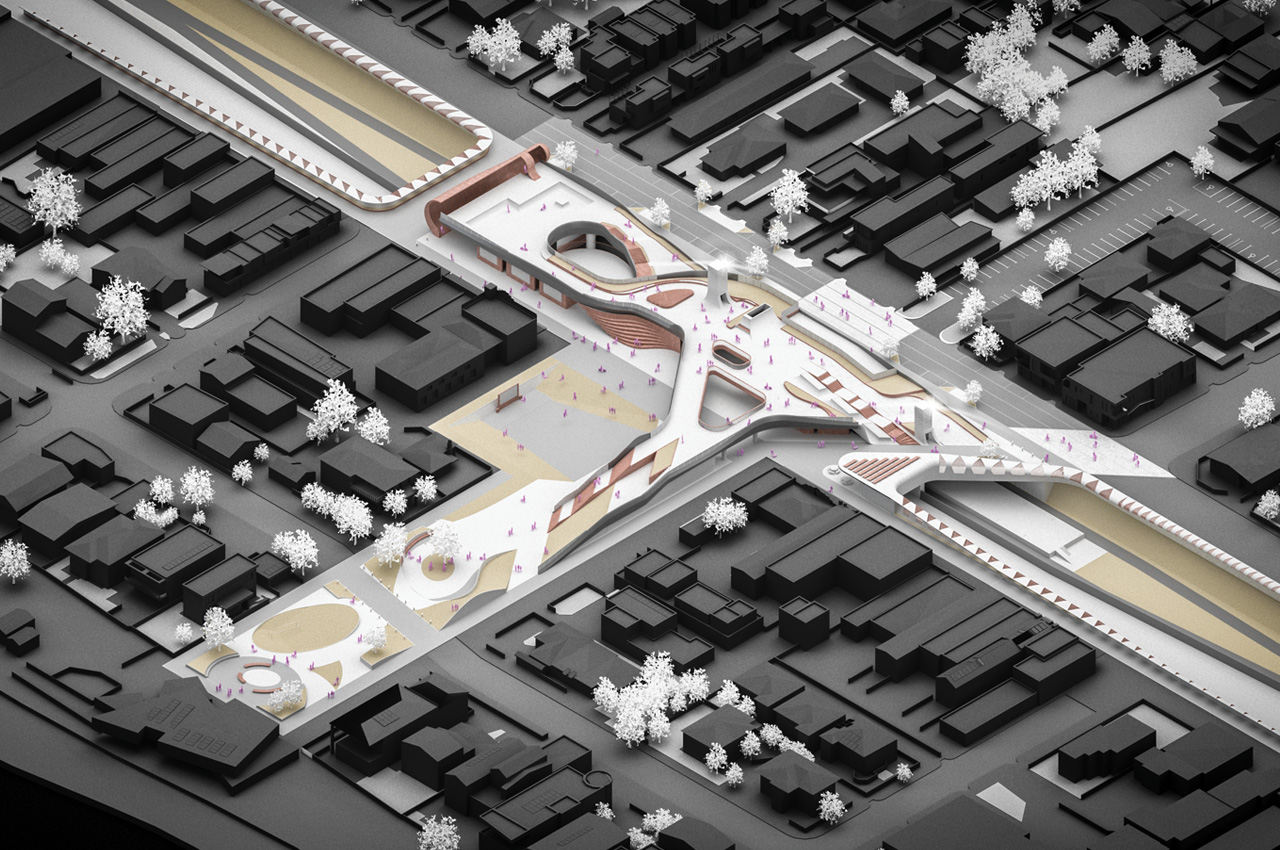
Given the considerable amount of transport infrastructure under construction, on drawing boards and taking shape in the daydreams of ambitious politicians, the concept of zero carbon transport buildings is featuring heavily in discussions amount those concerned about sustainability for our stations.
Infrastructure is a major built environment sector that has substantial planned spending in the coming decades. The environmental impact of transport-related built infrastructure (stations, terminals, depots and the like) therefore features prominently in discussions among and within state governments, councils, developers and designers who aim for increasing sustainability on their projects. Zero-carbon initiatives for the design of transport buildings and related infrastructure are considered even more relevant due to the high level of embodied energy, as well as the operational energy needs of these facilities.
Passive measures such as innovation in, and careful selection of construction materials are major factors in the quest for carbon reduction on station projects. By their nature, their geometry encompasses large volumes (to be heated or cooled, if in a temperate climate), long spans, large surface areas and a high demand on access to (day)light. Strict fire-safety regulations and other guiding principles for station design make low-embodied-carbon material choices (such as the use of timber) more difficult, if not impossible, to accommodate. Concrete, steel, aluminium and glass are the typical materials of choice due to their structural properties, fire safety rating, durability, and ease of maintenance. Yet all these materials include high-embodied carbon.
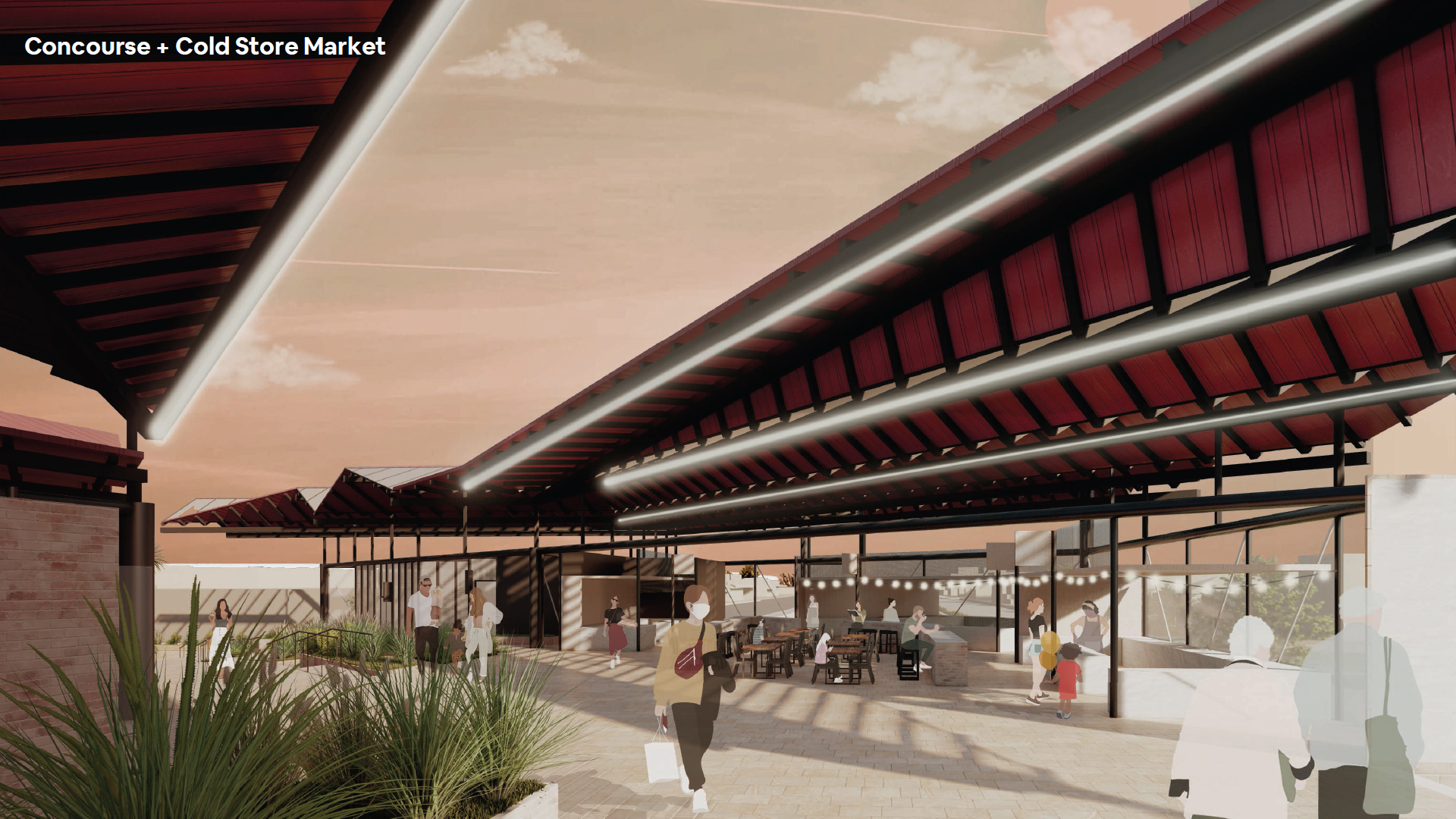

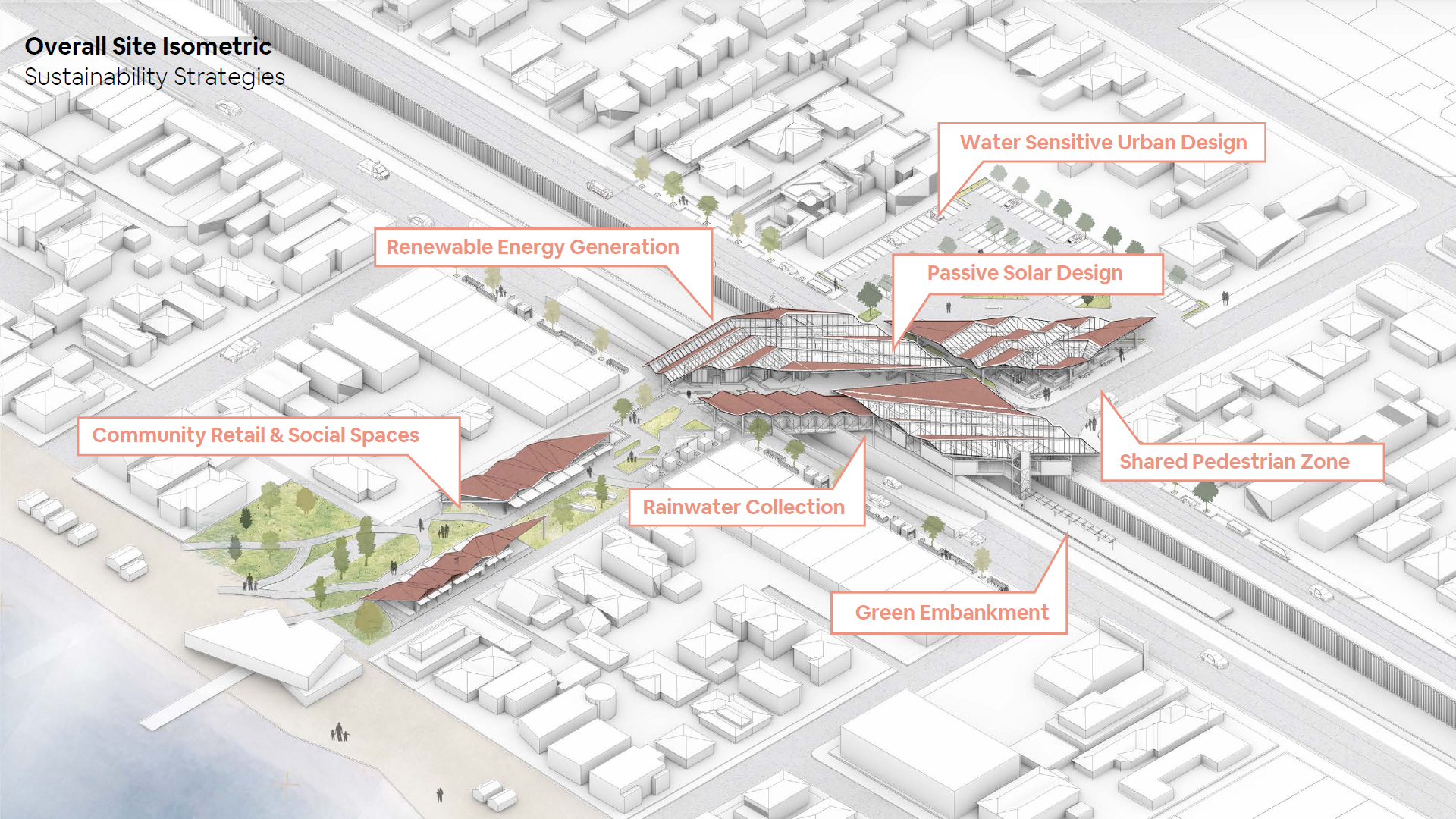



Background to net zero design of transport infrastructure
Transport buildings are operated in particularly demanding public environments, combining different functions such as commuting, parking, retail, or other civic purposes. In the past, their design was often highly functionally driven, focusing mainly on their primary function as transport hub, and leaving little space for broader consideration about their impact on their immediate surroundings, or the environment more holistically.
Issues related to the activation of the public realm, security, and streamlined connectivity mean that many of the facility’s functions are required 24/7 and during periods when staff are not occupying the buildings. As a result, energy consumption can be twice that of other public buildings. In that sense, the design of transport buildings differs from most buildings in that the lead roles are more usually filled by engineers than architects.
For a large percentage of Australian transport infrastructure, service providers and operators are actively looking into ways to address zero carbon challenges1. This is expressed via the numerous initiatives listed in the Net-Zero-Tracker Transportation Sector report (June 2020)2. There, the most common measures for carbon reduction on existing infrastructure relates to the switch from conventional lighting to energy-efficient LED lighting, as well as the installation of rooftop solar PV systems for renewable energy generation.
In Victoria, the Level Crossing Removal Project (LXRP) is one of the largest rail infrastructure projects, involving the removal of 75 level crossings throughout the Melbourne rail network to improve safety, reduce congestion and improve efficiencies through increased capacities.
One of the project’s initiatives, Reservoir Station, provides a useful reference regarding numerous carbon-reduction initiatives, having earned the Sustainability Award (among others) at the Australasian Rail Industry Awards3. The project’s sustainability achievements are impressive, with a 41 per cent reduction in electricity demand during peak times and a 92 per cent reduction in water compared against standard train station functioning4.
The design of transport buildings differs from most buildings in that the lead roles are more usually filled by engineers than architects
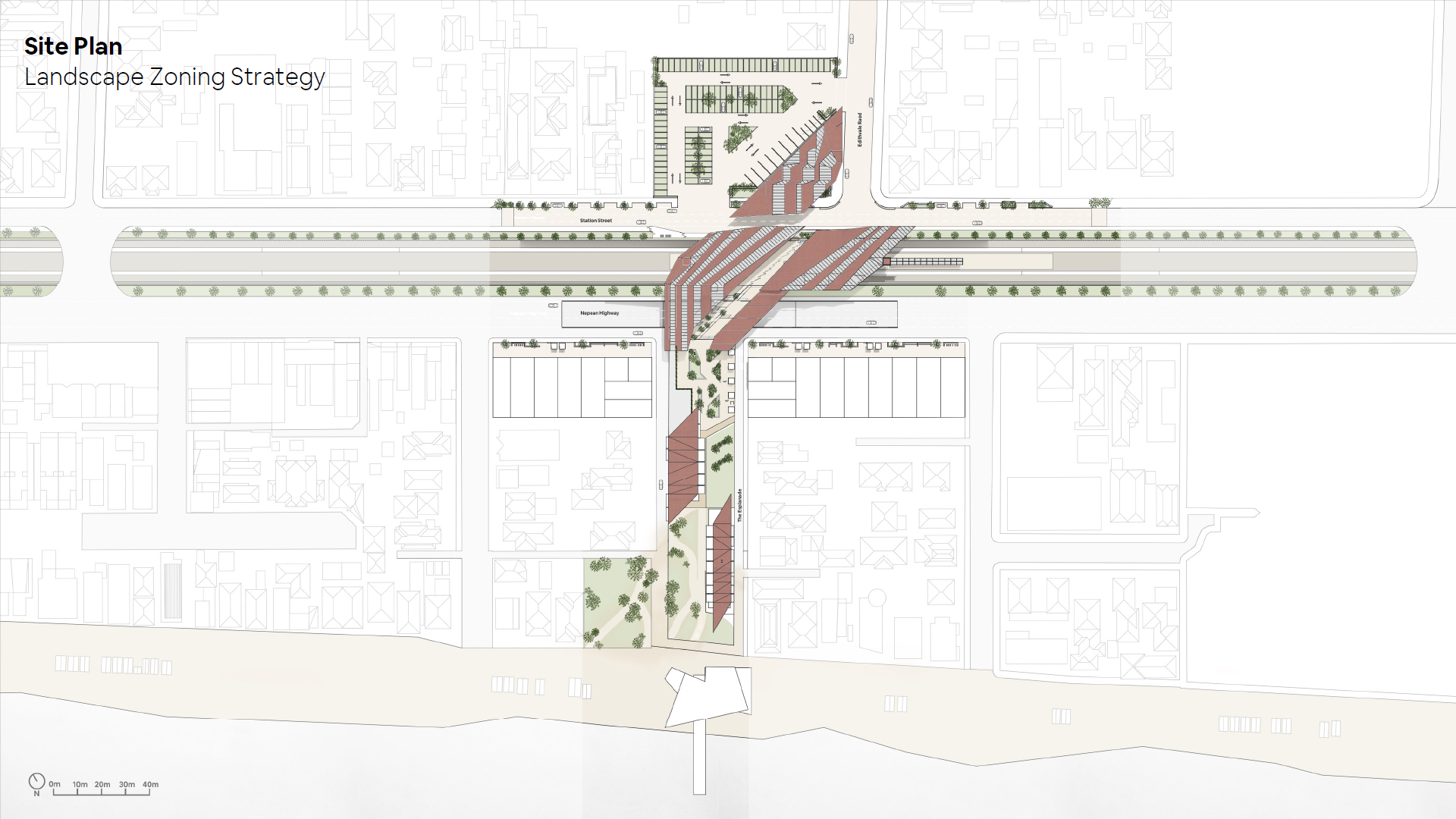

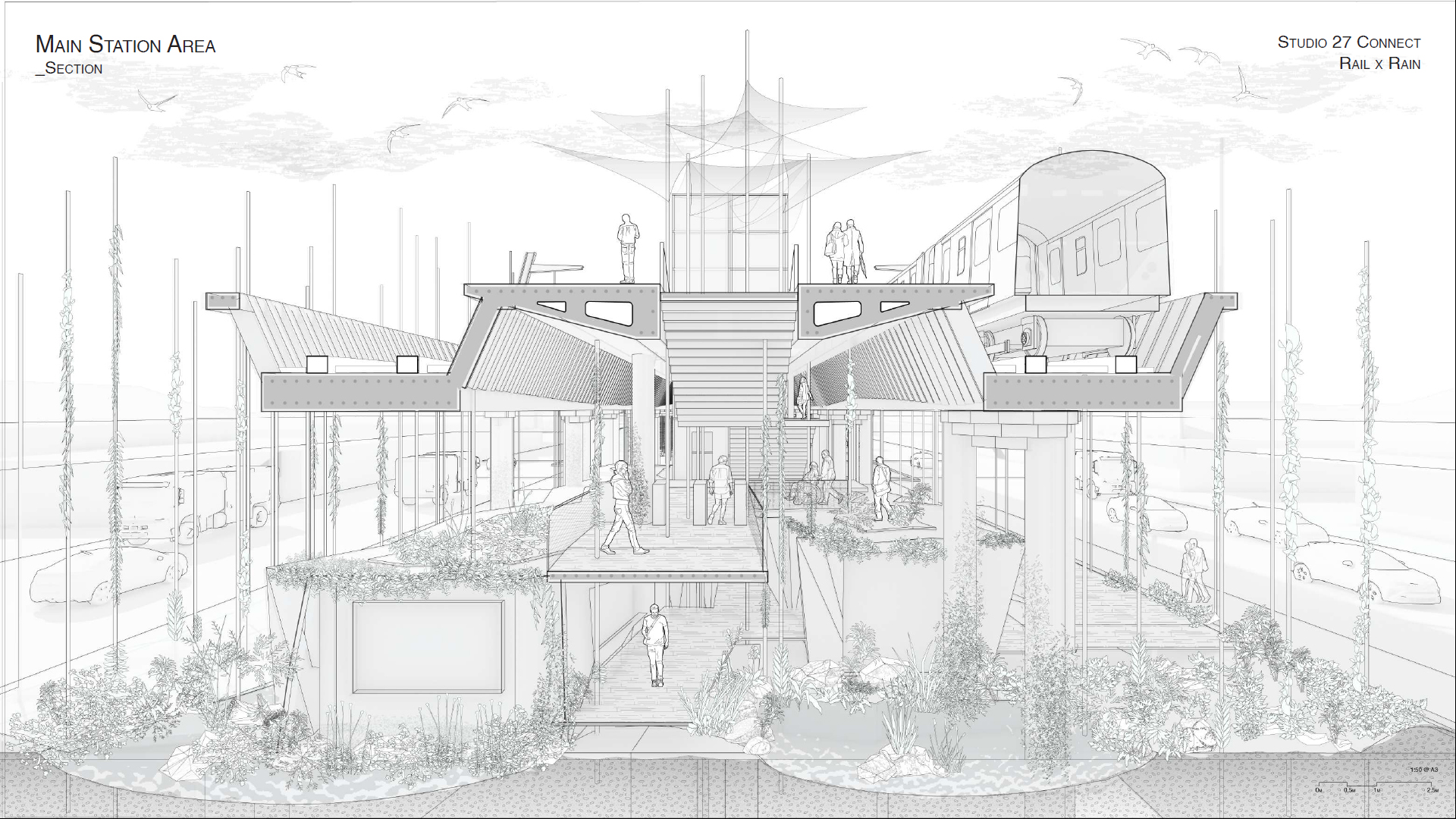

Selection of raw materials for the station resulted in a 33 per cent reduction in Portland cement, which was replaced with different substitutes such as fly ash and slag. Next to material choices for concrete, the designers also ensured that the steel used in construction was responsibly sourced, with the goal to further reduce the carbon intensity of the embodied materials for the station.
With achievements such as these in mind, in 2021 students and academics from the University of Melbourne joined forces with selected consultants from industry to explore the question of net zero for the Edithvale and Chelsea stations that are part of the LXRP.
The premise of the studios was to marry architecture and engineering more closely together at the early design stage, and to generate building solutions that excel both in their architectural outcomes, as well as their technical performance. This concept is known as “integrated design”.
The studio also encouraged students to integrate more urban and landscape design adjacent to the site to develop new energy efficient precincts for the suburbs and communities. Located on the Frankston train line, the two projects served as a case study in the application of integrated design as a part of the ‘i-Hub’ affordable heating and cooling program, an ‘innovation hub’ initiated by AIRAH, and funded by Australian Renewable Energy Agency (ARENA).
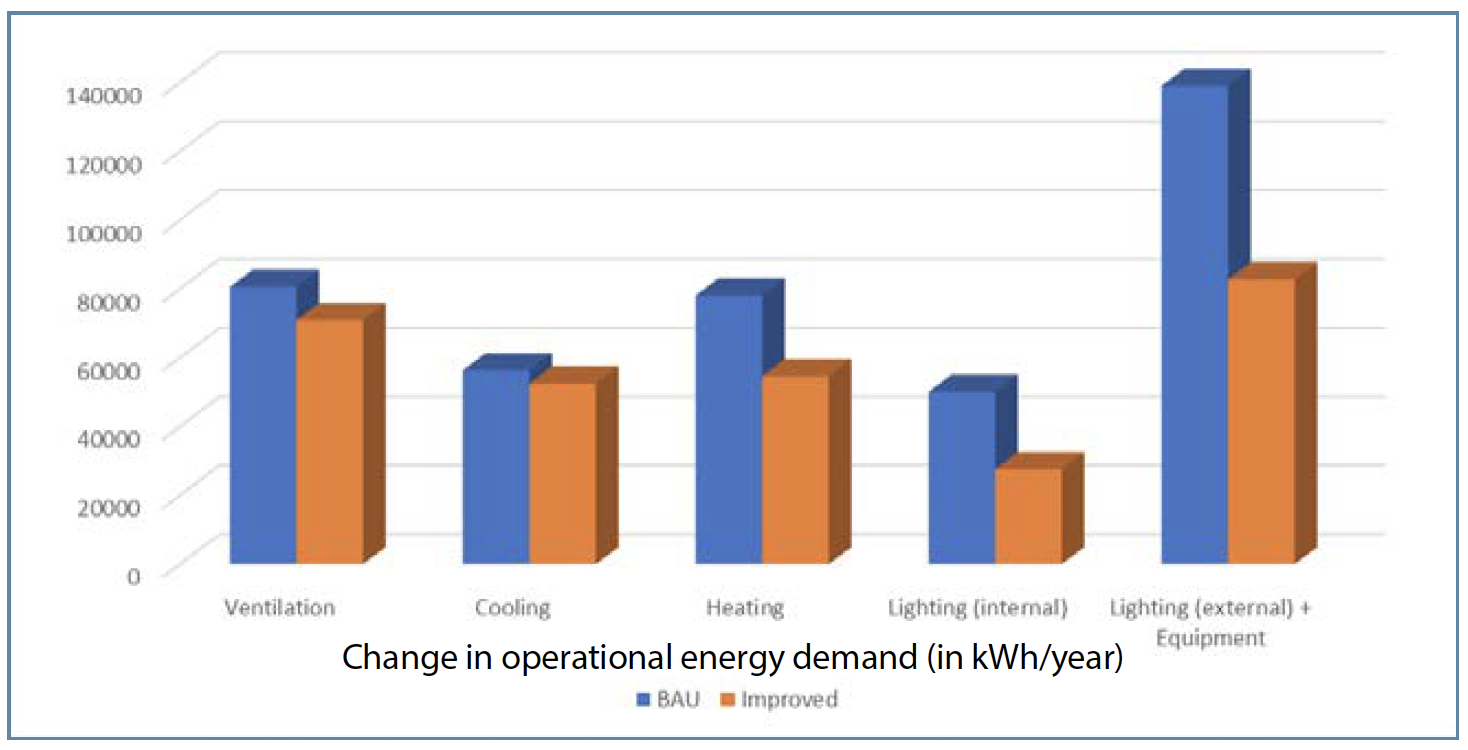



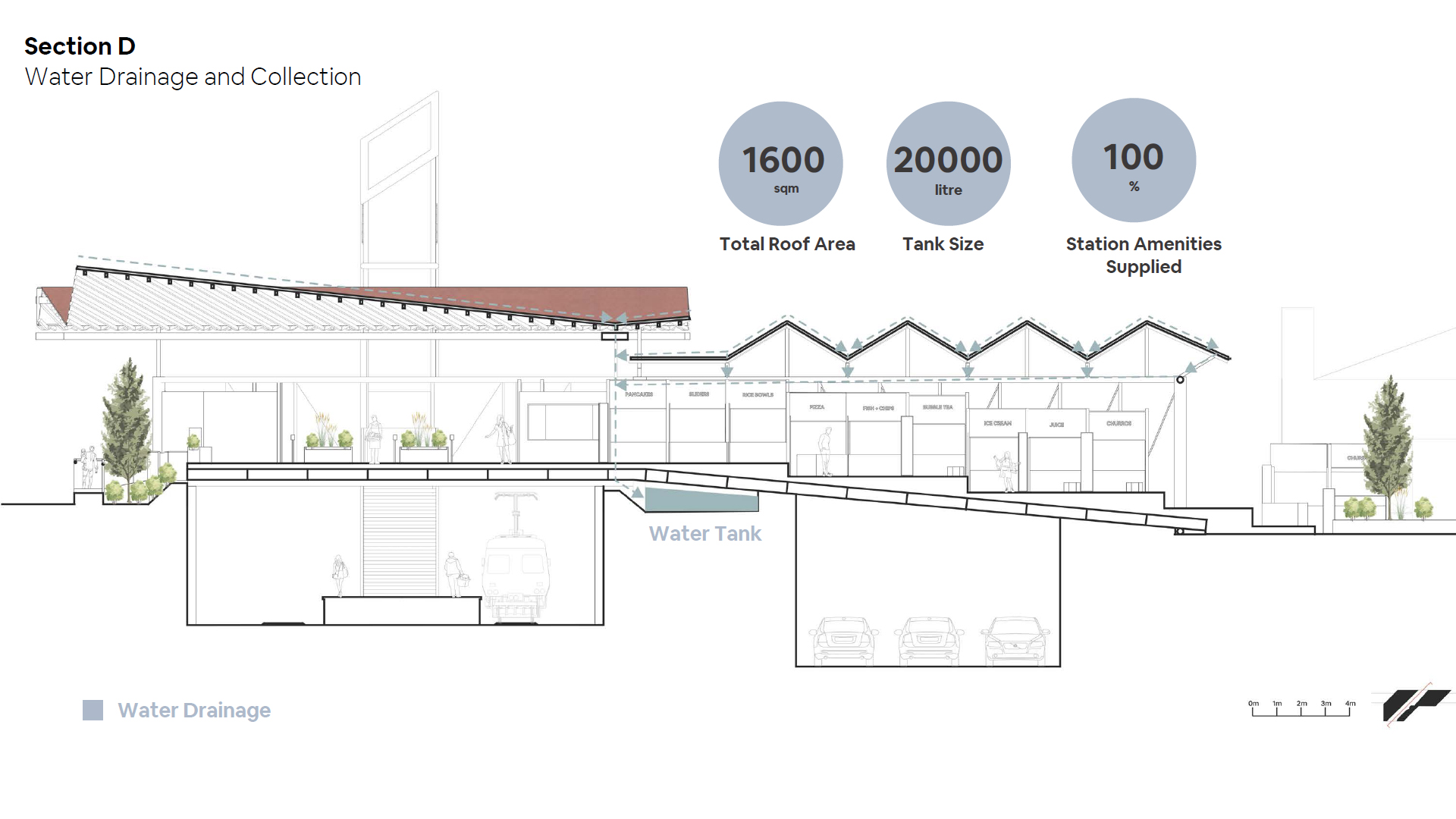

The Integrated Design Studios (IDSs) approach and outcome
Industry professionals acting in the client role supported by WSP engineers and Cox architects along with University of Melbourne students spent close to 15 weeks in advancing their proposals for the stations. Four groups were formed to examine innovative technologies to yield significant carbon reduction via both active and passive measures, but also by considering the wider ecology of the train station within its public realm. When addressing passive measures for carbon reduction, students proposed alternatives to conventional material selection via reuse or recycled material solutions. In that sense, students frequently had to consider the nexus between functional requirements, aesthetics, structural systems, and energy performance.
Energy efficiency, (wastewater) management and further carbon reduction via active measures were some further key opportunities investigated by students to explore zero-carbon targets. Solar simulation software was used for building envelope optimisation – in particular for shading, thermal insulation, skylight area definition and more.
The initiatives introduced by the students provided new ways of thinking about train station design, and they pushed the agenda of current approaches. Some of the passive measures applied include optimising the station envelope’s energy performance, rainwater collection and use; the application of reused and recycled materials; optimised roof orientation with horizontal extrusions for shading; and extensive planting/natural vegetation for shading and as thermal buffe – just to name a few.
Next to addressing passive measures, several active measures were proposed in line with current best practice and innovation for station design5,6: Increasing heat-pump efficiency via smart temperature settings, changing from gas-fired to electric HVAC systems (heat pumps) for heating and cooling, the replacement of conventional station lighting with low-energy LED lighting, as well as an intelligent lighting-control strategy linked to actual use via IoT technology.




Via these initiatives the student feasibility vetting showed close to 29 per cent reduction compared to business as usual (AU) in operational energy demand could be achieved. For this high-energy-intensive train station typology this represents a significant percentage.
In addition to the above reduction in operational energy demand, other opportunities were investigated to provide additional onsite energy supply. Several options were investigated, such as wind farms, Piezo-electricity generation, and photovoltaic (PV) systems.
Existing efforts around the world7,8 highlight in particular the benefits of solar rooftop (or other) PV systems for onsite renewable electricity generation. For the student project vetting, the large roof areas of the stations, with up to 2,500m2 of surface area, did provide a major opportunity to investigate the use of photovoltaics in conjunction with battery usage.
Analysis of the roof shape and orientation resulted in the proposition of four different solar array subsystems, with panels tilted at 30 degrees of each orientation. Combined, these subsystems have a capacity to provide 243,800kWh/a of electricity supply, thereby offering approximately 60 per cent of energy supply when compared to BAU.
Based on the analysis of the technologies investigated by students for their design of a train station, zero carbon solutions for this highly energy-intensive building typology were not achieved. Yet students found credible pathways towards significant energy reductions while implementing a holistic response to environmental, functional, and aesthetic concerns. They achieved a total of about 89 per cent reduction in grid energy consumption when considering energy demand reduction (29 per cent) and 60 per cent on-site renewable supply of energy when compared to BAU.
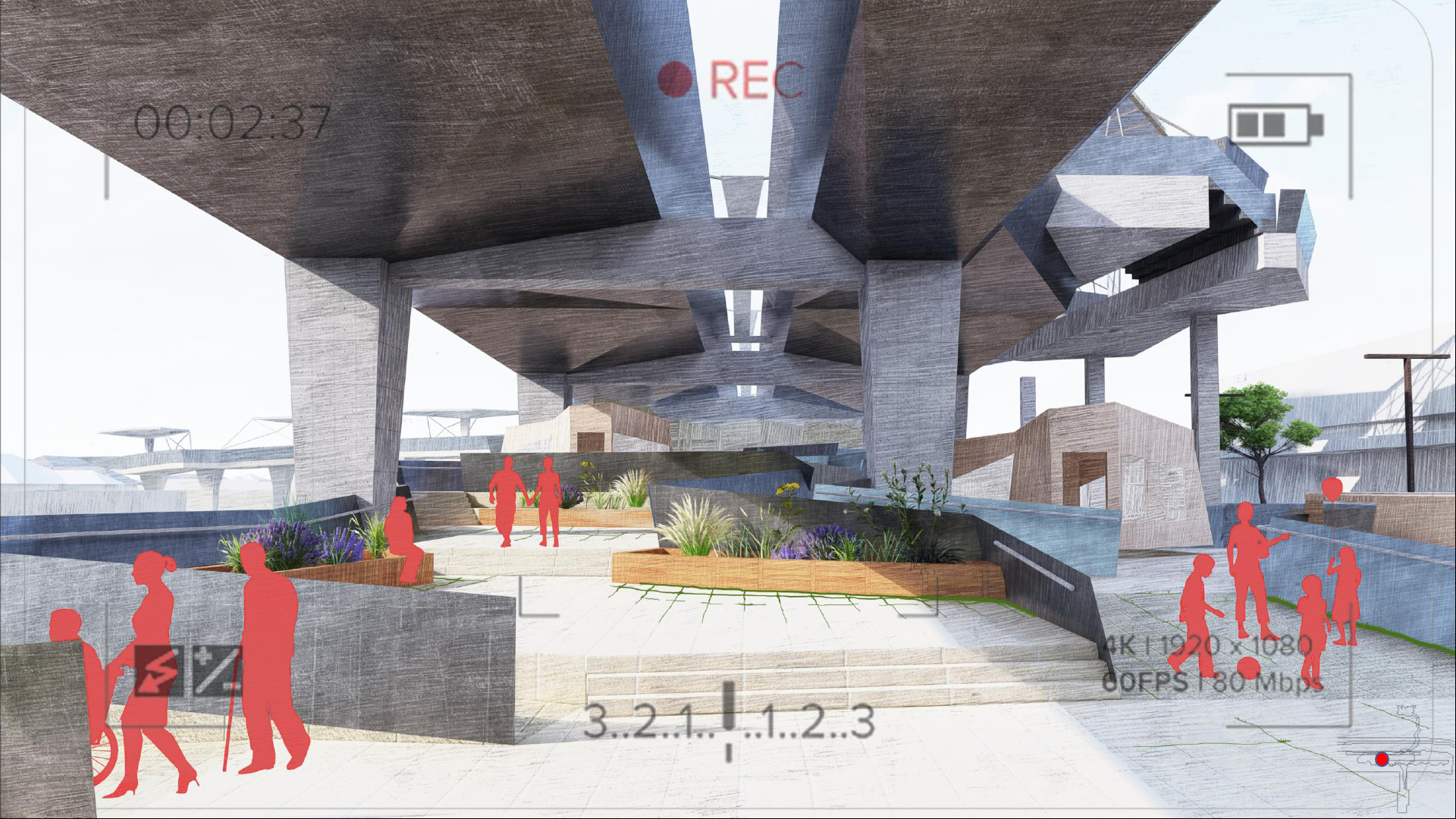

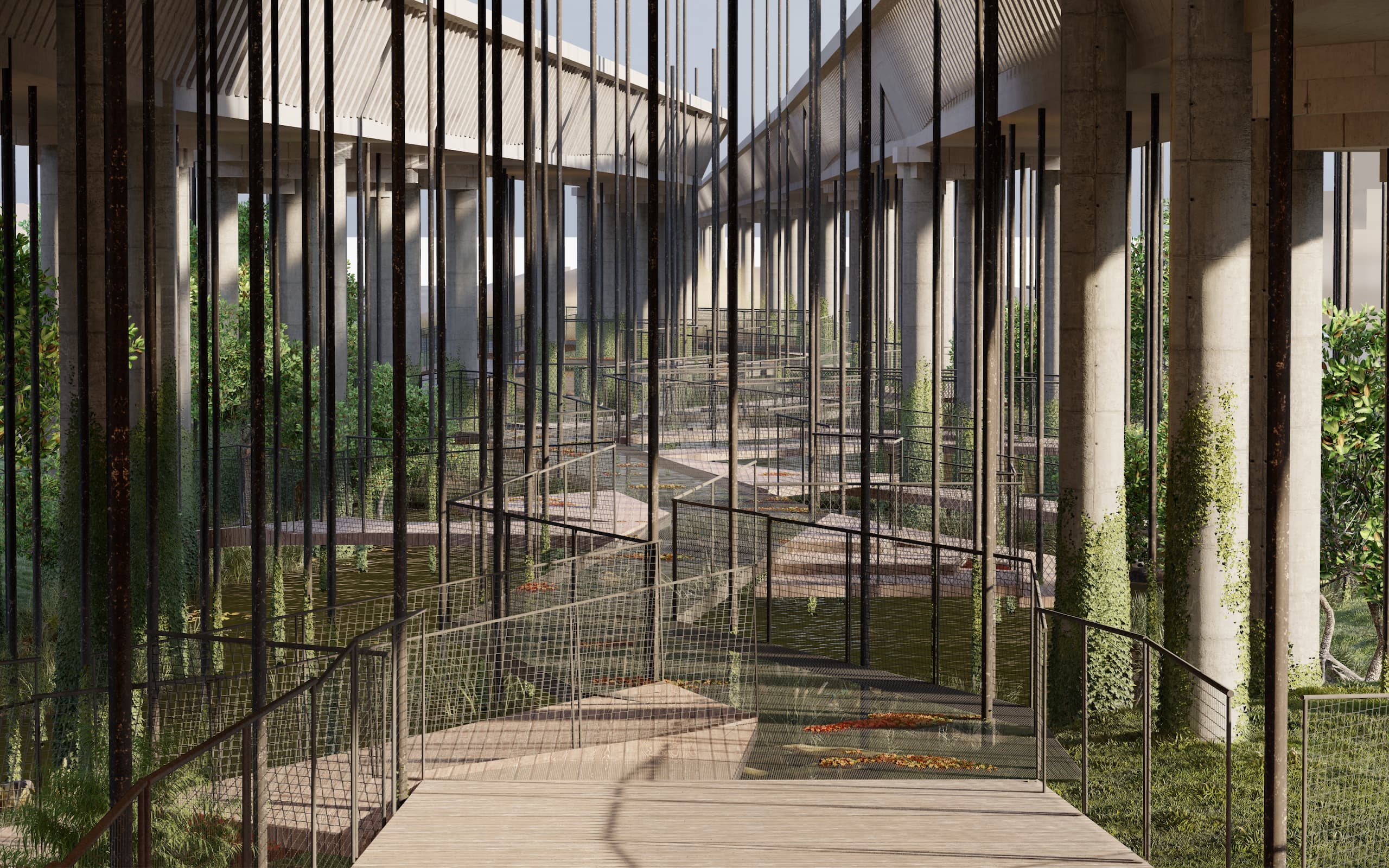

Like to know more?
Visit www.ihub.org.au
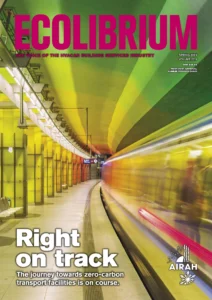
This article appears in Ecolibrium’s Spring 2023 edition
View the archive of previous editions
Latest edition
See everything from the latest edition of Ecolibrium, AIRAH’s official journal.




